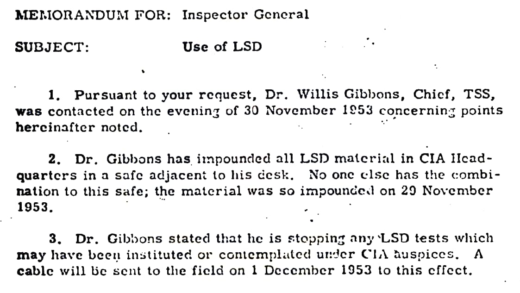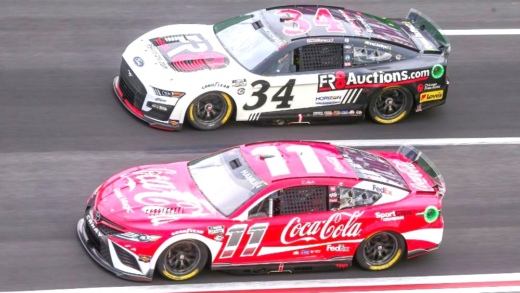Glass recycling rates in the U.S. are low, with only about 30% of glass containers recycled in 2018. Various barriers, including consumer behavior and lack of infrastructure, contribute to this issue. Education and active participation by consumers are crucial for improving recycling rates. Individuals can adopt practical steps to support recycling initiatives, while policy changes can enhance infrastructure and public awareness. Addressing common misconceptions about glass recycling will further encourage participation and environmental responsibility.
Glass Recycling Rates: What Percentage of Glass Containers Were Recycled in 2018?
In 2018, the glass recycling rates in the U.S. revealed a concerning statistic: only about 30% of glass containers were recycled. This figure illustrates the ongoing challenges in glass recycling efforts across the country. The low percentage of glass containers recycled highlights a significant gap in the recycling process, especially when considering the environmental benefits of recycling glass.
Recycling glass is vital for several reasons:
- Glass can be recycled indefinitely without losing quality.
- Recycling glass saves energy, reducing greenhouse gas emissions.
- Using recycled glass in production reduces the need for raw materials.
Despite these advantages, the recycling rates remain low. Understanding these figures is crucial for identifying areas for improvement in glass recycling practices.
Why So Low? Exploring the Reasons Behind Low Recycling Rates for Glass in the U.S.
The reasons behind low recycling rates for glass in the U.S. are multifaceted. Several factors contribute to this issue, including consumer behavior, lack of awareness, and logistical challenges. One significant reason is the perception that glass recycling is inconvenient. Many people do not have easy access to recycling facilities or curbside pickup for glass, which deters them from participating.
Furthermore, public awareness about the importance of recycling glass is often insufficient. Many consumers are unaware of the environmental impacts of not recycling glass, which can lead to higher landfill waste and increased carbon emissions. The lack of education on the recycling process itself also plays a role in this issue.
Lastly, the economics of recycling can be challenging. In some regions, the cost of collecting, transporting, and processing glass can outweigh the benefits, leading to fewer incentives for recycling facilities to operate efficiently.
Barriers to Recycling: What Are the Main Obstacles Preventing Americans from Recycling Glass?
Several barriers hinder Americans from effectively recycling glass. First, there is the issue of contamination. Many people do not clean their glass containers properly before recycling, leading to contamination that can render entire batches of glass unrecyclable.
Second, the infrastructure for glass recycling varies significantly across the country. In some areas, residents have easy access to recycling bins, while in others, they may need to drive long distances to drop off their glass at designated facilities.
Additionally, misleading information about glass recycling can create confusion. Some individuals believe that all glass is recyclable, while others think that certain colors of glass cannot be recycled. These misconceptions can discourage participation in recycling programs.
Addressing these barriers is essential for improving glass recycling rates. It requires a combination of better education, enhanced recycling infrastructure, and community engagement to encourage more Americans to recycle their glass containers.
The Glass Recycling Process: How Does the Recycling Process for Glass Work?
Glass recycling is a critical process that helps to reduce waste and conserve resources. The glass recycling process involves several key steps:
- Collection: Glass containers are collected from curbside recycling bins or drop-off centers.
- Sorting: At recycling facilities, glass is sorted by color and type. This step is crucial as different types of glass may require different processing methods.
- Cleaning: The sorted glass is cleaned to remove any contaminants, such as labels, metal lids, or food residue. Clean glass is essential for maintaining the quality of recycled products.
- Crushing: The clean glass is then crushed into small pieces called cullet. This cullet can be melted down and reused in the manufacturing process.
- Melting: The cullet is heated in a furnace until it melts. This process requires less energy compared to melting raw materials, making it more environmentally friendly.
- Forming: The melted glass is shaped into new products, such as bottles, jars, or fiberglass insulation.
- Cooling: Finally, the new glass products are cooled and prepared for distribution.
This efficient recycling process not only conserves natural resources but also significantly reduces energy consumption and greenhouse gas emissions. Understanding how glass recycling works can help consumers make informed decisions about their recycling habits.
Environmental Impact: What Are the Environmental Consequences of Not Recycling Glass?
Failing to recycle glass has severe environmental consequences. When glass is not recycled, it contributes to increased landfill waste, which can lead to several issues:
- Landfill Space: Glass takes thousands of years to decompose, occupying valuable landfill space that could be used for other waste.
- Resource Depletion: Not recycling glass means more raw materials must be extracted to produce new glass products, leading to resource depletion.
- Energy Consumption: The production of glass from raw materials consumes more energy than using recycled glass. This higher energy usage contributes to increased carbon emissions.
- Soil and Water Pollution: Glass in landfills can leach harmful substances into the soil and groundwater, posing risks to ecosystems and human health.
By recycling glass, we can mitigate these environmental impacts, preserve natural resources, and reduce energy consumption. It’s crucial for individuals to understand the importance of glass recycling and its role in protecting our planet.
Global Success Stories: Are There Successful Glass Recycling Programs in Other Countries?
Many countries have implemented successful glass recycling programs that can serve as models for the U.S. Here are a few notable examples:
- Germany: Germany has an extensive bottle deposit system that encourages consumers to return glass bottles for a refund. This system has resulted in a recycling rate of over 90% for glass containers.
- Sweden: Sweden’s recycling program emphasizes public education and accessibility. With easily accessible recycling stations and a strong public awareness campaign, Sweden achieves high glass recycling rates.
- Belgium: Belgium has established a successful curbside recycling program that includes glass collection. Their innovative approach has led to a significant increase in the percentage of glass containers recycled.
These countries demonstrate that with the right policies and consumer engagement, glass recycling rates can be significantly improved. Learning from their successes can help the U.S. develop more effective glass recycling initiatives.
Consumer Responsibility: The Role of Consumers in Glass Recycling
Consumers play a pivotal role in improving glass recycling rates. Their decisions directly impact the effectiveness of recycling programs. By actively participating in glass recycling, consumers can help create a sustainable cycle that benefits the environment. Here are a few ways consumers can make a difference:
- Educate Yourself: Understanding what can and cannot be recycled is crucial. Consumers should familiarize themselves with local recycling guidelines.
- Practice Proper Recycling: Clean glass containers before recycling to avoid contamination. This ensures that the glass can be processed effectively.
- Advocate for Better Facilities: Encourage local governments to improve recycling infrastructure, making it easier for everyone to recycle.
- Support Eco-Friendly Brands: Choose brands that prioritize sustainable packaging and recycling initiatives.
By taking these actions, consumers can significantly increase glass recycling rates and contribute to a healthier planet.
Individual Impact: How to Contribute to Better Glass Recycling Practices
Individuals can adopt several actionable steps to enhance glass recycling practices in their communities. Here are some effective strategies:
- Join Local Initiatives: Participate in community clean-up events focused on recycling. These initiatives raise awareness and improve local recycling rates.
- Organize Workshops: Host or attend workshops that educate others about the benefits of glass recycling and how to do it correctly.
- Utilize Social Media: Share information about glass recycling on social platforms to reach a wider audience. Highlight the importance of recycling and share local resources.
- Encourage Reuse: Before recycling, consider reusing glass containers for storage or crafting. This reduces waste and promotes sustainability.
By implementing these practices, individuals can play a crucial role in fostering a culture of recycling and sustainability.
Legislative Changes: Improving Glass Recycling Through Policy
Policy changes are essential for enhancing glass recycling in the U.S. Here are several changes that could positively impact recycling rates:
- Incentive Programs: Introduce financial incentives for consumers and businesses that actively participate in glass recycling.
- Deposit Return Schemes: Implement deposit systems for glass bottles, similar to those in countries with high recycling rates. This encourages consumers to return bottles for a refund.
- Funding for Recycling Infrastructure: Increase government funding for recycling facilities to improve processing capabilities and accessibility.
- Public Awareness Campaigns: Launch campaigns to educate the public on the importance of recycling and the impact of glass waste on the environment.
Legislative changes can create a supportive environment for glass recycling, ultimately leading to higher recycling rates and a reduction in waste.
Debunking Myths: Common Misconceptions About Glass Recycling
There are several misconceptions surrounding glass recycling that can hinder participation. Addressing these myths is crucial for improving recycling rates:
- Myth 1: All glass is recyclable.
Fact: Not all glass can be recycled, especially colored glass and certain types of glass containers. - Myth 2: Recycling glass is not worth it.
Fact: Recycling glass saves energy and resources, making it highly beneficial for the environment. - Myth 3: It’s okay to recycle dirty glass.
Fact: Contaminated glass can ruin entire batches, making it essential to clean containers before recycling. - Myth 4: Recycling facilities accept all types of glass.
Fact: Facilities may have specific guidelines regarding the types of glass they accept.
By clarifying these misconceptions, consumers can make informed decisions and engage more effectively in glass recycling efforts.





Comments are closed.